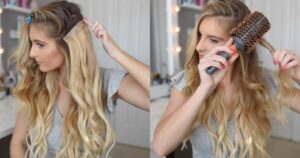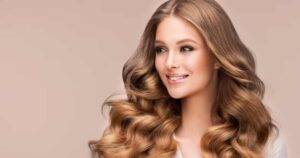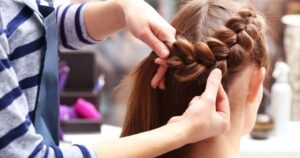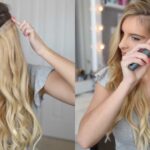Setting out on a hair color transformation adventure unlocks a realm of endless possibilities. Within the vibrant landscape of hair coloring, a frequently pondered query emerges: Is it feasible to blend permanent and semi-permanent hair dyes? This inquiry delves into the nuances of creating a personalized palette for your locks, combining the lasting vibrancy of permanent dyes with the versatile charm of semi-permanent shades.
In the quest for the perfect hue, the interplay between permanence and flexibility becomes a captivating dance. Imagine a canvas where the endurance of permanent color intertwines with the ephemeral allure of semi-permanent shades. Can you mix permanent and semi-permanent hair colors to craft a masterpiece uniquely yours? As we navigate through this amalgamation, discover how this creative blend can be the key to unlocking a spectrum of colors that seamlessly reflect your style and personality.
What Is a Permanent Hair Color?
Permanent hair color is a type of hair dye that penetrates the hair shaft and alters its natural color for an extended period. Unlike semi-permanent or temporary options, permanent hair color contains ammonia and peroxide, allowing it to lift the existing pigment and deposit new color molecules. This results in a lasting and more dramatic change that remains until new hair growth occurs.
What Is Semi-Permanent Hair Color?
Semi-permanent hair color is a popular alternative to permanent dyes, known for its non-penetrative nature and absence of harsh chemicals like ammonia and peroxide.
Gentle Color Enhancement:

This type of hair dye is renowned for providing a temporary and less damaging solution to those looking to enhance their natural hair color or experiment with vibrant shades without a long-term commitment.
Temporary Beauty with Gradual Fade:
Offering a temporary transformation, semi permanent color gradually fades with each wash, allowing for versatility and change without the permanence associated with other types of hair dyes.
Can You Mix Permanent and Semi Permanent Hair Color?
Certainly, blending permanent and semi permanent hair colors can be done, but it’s vital to grasp the unique qualities of each dye and the outcome you’re aiming for. Typically, combining them in a single application is not advised due to their distinct formulations and purposes.
If you’re seeking a color that lasts longer and merges the advantages of both permanent and semi-permanent dyes, contemplate using them consecutively. For instance, you could first use a permanent color to establish your desired base shade, and then employ a semi-permanent hue for touch-ups or to introduce highlights without committing to a permanent change.
Always adhere to the guidelines accompanying the hair color products, and before applying any mixed shades to your entire head, perform a strand test to guarantee you attain the desired outcome.
Mixing semi permanent hair color with shampoo?
When looking to achieve a subtle and gradual change in hair color, mixing semi-permanent hair color with your regular shampoo can be an effective method. This technique allows for a more controlled and diluted application, resulting in a softer, less intense hue.
Creating a Customized Tint:
By blending a small amount of semi-permanent hair color with your favorite shampoo, you can create a customized tint that caters to your desired shade. This DIY approach is particularly useful for maintaining vibrant colors while ensuring a gentle and gradual fading process.
Cautionary Tips for Mixing:
While mixing semi-permanent color with shampoo can be a creative way to experiment with your hair color, it’s essential to be cautious about the ratios. Ensure the mixture is well-blended and conduct a strand test to preview the outcome, preventing any unexpected results.
Mixing Hair Color With Conditioner To Refresh Color Reddit
Reviving Color Brilliance with Conditioner: Discover a popular hair care hack on Reddit – refreshing your hair color by mixing a small amount of semi-permanent or direct dye with your favorite conditioner. This method is praised for its simplicity and effectiveness in revitalizing fading colors between salon visits or home dye applications.
How to Mix and Apply:
To achieve the best results, combine a dollop of your preferred conditioner with a small amount of your chosen hair color, especially if you’re wondering if burgundy is a natural hair color. Blend thoroughly, ensuring an even distribution, and apply the mixture to damp hair. Leave it on for the recommended time, then rinse for a refreshed and vibrant hair color that looks professionally maintained. Always conduct a patch test and adjust the ratio based on your hair’s needs for a personalized color boost
Factors Affecting Hair Color Absorption
- Hair Porosity:
- Hair porosity refers to how well your hair absorbs and retains moisture.
- High porosity hair may struggle to hold onto color, leading to uneven results.
- Low-porosity hair can resist color absorption, creating a similar issue.
- Quality of Bleaching Products:
- The choice of bleaching products can significantly impact the hair’s ability to take color.
- Inferior or harsh bleach formulations may damage the hair cuticle, hindering color absorption.
- Previous Hair Treatments:
- Hair that has undergone multiple treatments, such as straightening or perming, may resist color.
- Residual chemicals from previous treatments can create a barrier.
Natural Hair Color:

- Darker Shades Require More: Darker natural hair colors often require more intensive bleaching for vibrant results.
- Adjusting Expectations: Realistic expectations based on your natural color can prevent disappointment
Practical Solutions to Enhance Color Absorption
| Solution | Implementation |
| Deep Conditioning | Regular deep conditioning improves hair porosity. |
| Quality Product Choice | Opt for professional-grade bleaching products. |
| Hair Strand Test | Conduct a strand test before full-color application. |
| Preparation Before Bleaching | Ensure hair is free of product buildup. |
| Professional Consultation | Seek advice from a colorist for personalized solutions. |
FAQS
What Does the Number 4 Signify in Braiding Hair?
The number 4 in hair braiding refers to a specific color in the braiding palette. Understanding its significance is crucial for appreciating the diverse styles emerging from this unique art form.
Can Permanent and Semi-Permanent Hair Colors Be Mixed?
Yes, it’s possible to mix permanent and semi-permanent hair colors. However, it’s recommended to understand their formulations and purposes. Sequential use can offer a longer-lasting color with the benefits of both.
How Can I Achieve a Subtle Change in Hair Color?
Mixing semi-permanent hair color with regular shampoo is an effective method for a controlled and diluted application, resulting in a softer, less intense hue.
Is Mixing Hair Color with Conditioner a Valid Technique?
Yes, mixing a small amount of semi-permanent or direct dye with conditioner is a popular technique to refresh hair color between salon visits or home dye applications. It’s praised for simplicity and effectiveness.
What Factors Affect Hair Color Absorption?
Hair porosity, the quality of bleaching products, previous hair treatments, and natural hair color are key factors. Understanding these helps in managing realistic expectations and enhancing color absorption.
How Can I Prepare My Hair for Successful Bleaching?
Deep conditioning, using professional-grade bleaching products, conducting a strand test, ensuring product buildup-free hair, and seeking professional consultation are practical solutions to enhance color absorption and prepare hair for successful bleaching.
Conclusion
The world of hair color offers a spectrum of possibilities, and the question of mixing permanent and semi-permanent dyes arises. While these two types of dyes have distinct formulations and purposes, it is indeed possible to blend them to create a unique and personalized look.
Sequential use, starting with permanent color for a base shade and adding semi permanent hues for touch-ups or highlights, can provide a harmonious balance between lasting vibrancy and temporary charm. Remember to follow the product guidelines and perform a strand test to ensure the desired outcome.











